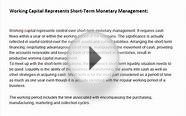
It’s payday. Mortgage, electric and water bills are due. Your daughter is sick and the doctor has prescribed medication not covered by your health insurance. To top it off, a few days ago someone smashed the car window — just in time for the storm warning.
Despite a decent job, you can barely make it from one paycheck to the next, let alone fund your rainy day fund. Now, suddenly, that rainy day is here.
You remember seeing TV ads touting emergency cash advance loans approved in hours, with or without good credit. It seems a good quick fix, just this once. You’ll pay it back on your next payday. But two weeks turns into five months, and the payback on an initial $375 loan costs you nearly $1, 000 by the time you add on the triple digit interest rate and fees.
Related: How to Create a Rainy Day Fund
“A long-term debt trap”
This scenario — or some variation of it — affects more than 12 million Americans each year who turn to the safety net of payday loans. The monies are promoted as quick and easy cash advances (or direct deposit loans) issued by a $46 billion industry that has seen explosive growth since its inception in the 1990s. In fact, payday loan shops are more ubiquitous than McDonald's.
Payday loans cater to low-income customers, but the new face of pay loan customers is increasingly middle class. The nonprofit Urban Institute recently found that households with incomes of $50, 000-plus, unable to make ends meet, also are turning to payday loans in increasing numbers.
Are you among them? If so, you may already know that the typical payday loan of $300 to $500 comes with triple-digit interest rates ranging from 391 percent to 521 percent, annually adding more than $10 billion from fees to payday industry coffers.
“Payday companies market their loans as a quick fix to a short term problem, but in fact, these loans are a long-term debt trap, ” says Diane Standaert, director of state policy for the Center for Responsible Lending (CRL), a nonprofit organization designed to protect homeownership and family wealth.
“The payday industry is predatory by design, ” says Standaert. “It thrives on a business model that banks on borrowers not being able to repay on time. When the borrower fails, the lender succeeds. That’s what drives the business.”
More drawbacks of a fast cash loan
If you take out an initial payday loan, you are most likely using it to cover key household expenses rather than an emergency, say experts. An often-cited study by the Pew Charitable Trust on payday lending found that nearly 70 percent of consumers needing a fast cash loan use it to cover basic costs such as gas, food and utility bills.
But the bigger trouble starts there. Soon you may be needing a payday loan to cover the payday loan.
“These are not once in a blue moon, quick or short-term loans, ” says Standaert. “Our data shows that 75 percent of the borrowers take out a loan within two weeks of the previous loan payout. These are not for ten separate emergencies. The payday loans are causing the emergency because people need the next payday loan to payoff the one before it. Only 2 percent of all borrowers take out one loan and pay it off on time.” Imagine all the family stress that can cause.
Interesting facts
Additional information











